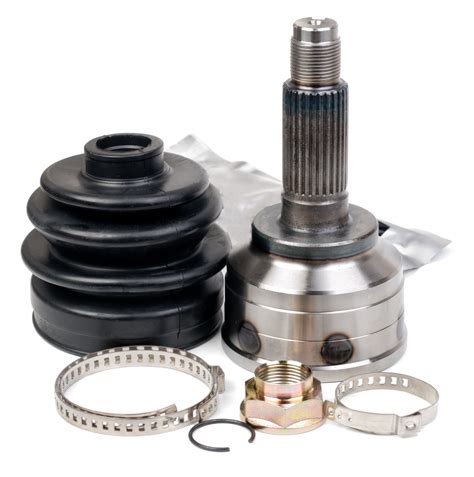CV Joint Replacement: Making the Right Choice for Your Budget
Replacing a worn-out CV joint is a necessary repair for any vehicle owner. These crucial components, connecting your car's transmission to the wheels, allow for smooth turning and power transfer. However, the cost of this repair can vary significantly, leaving many drivers wondering how to make the right choice for their budget. This comprehensive guide explores various factors influencing CV joint replacement costs and helps you navigate the process intelligently.
What Factors Determine CV Joint Replacement Costs?
Several factors contribute to the final price of a CV joint replacement. Understanding these will empower you to make informed decisions and potentially save money.
1. The Type of Vehicle:
Luxury cars and larger vehicles often have more complex drive systems and more expensive parts, resulting in higher labor and component costs. Smaller, more common vehicles typically have more affordable options available.
2. The Type of CV Joint:
There are different types of CV joints (constant velocity joints), each with a unique price point. Some are simpler to replace, others require more specialized tools and expertise.
3. Parts Quality:
OEM (Original Equipment Manufacturer) parts are generally the most expensive but offer the best fit and longevity. Aftermarket parts offer a more budget-friendly alternative, but their quality can vary significantly. Choosing a reputable aftermarket brand is key to balancing cost and durability.
4. Labor Costs:
Labor rates vary widely depending on your location and the chosen repair shop. Independent mechanics typically charge less than dealerships. The complexity of the repair, influenced by the vehicle's make and model, also impacts labor time and consequently, the cost.
5. Additional Repairs:
Sometimes, a worn-out CV joint isn't the only problem. During the replacement process, mechanics might discover additional issues requiring further repair, such as damaged boots or related components. These add to the overall cost.
How Can I Save Money on CV Joint Replacement?
While you can't always completely avoid high costs, several strategies can help manage your expenses:
1. Shop Around:
Get multiple quotes from different repair shops, including both dealerships and independent mechanics. Compare not just the total price but also the warranty offered and the shop's reputation.
2. Consider Aftermarket Parts:
High-quality aftermarket parts can offer significant savings compared to OEM parts without dramatically compromising longevity. Do your research to find reputable brands with positive customer reviews.
3. DIY (Do It Yourself):
If you have mechanical experience and the right tools, replacing the CV joint yourself can be a cost-effective option. However, this requires considerable mechanical skill and careful attention to detail to avoid further damage. Incorrect installation can lead to more expensive repairs down the line.
4. Timing of Repair:
Catching a failing CV joint early can prevent further damage and save money. Ignoring early warning signs (clicking or popping noises during turns, vibrations) can lead to more extensive repairs.
What are the signs I need a CV Joint Replacement?
H2: What are the signs my CV joint needs replacing?
A failing CV joint often manifests itself through noticeable symptoms:
- Clicking or popping sounds: Particularly noticeable when turning corners, especially at low speeds.
- Vibrations: Felt in the steering wheel or floorboard, especially at higher speeds.
- Grease leaks: Noticeable grease around the CV joint boot.
- Torn or damaged CV boot: A visibly damaged boot indicates a potential problem, even if other symptoms aren't yet apparent.
Addressing these issues promptly can prevent more extensive and costly repairs later on.
H2: What is the difference between an inner and outer CV joint?
Inner and outer CV joints serve the same purpose – transmitting power from the transmission to the wheel – but their location and replacement processes differ. Inner CV joints are closer to the transmission and often require more extensive disassembly for replacement. Outer CV joints are closer to the wheel and are generally easier and less expensive to replace.
H2: How long do CV joints last?
The lifespan of a CV joint varies depending on several factors including driving style, road conditions, and the quality of the parts. Typically, they can last anywhere from 50,000 to 100,000 miles or even longer with proper maintenance. However, harsh driving conditions or neglect can significantly shorten their lifespan.
By carefully considering the factors influencing costs and exploring ways to save money, you can make an informed decision when facing a CV joint replacement. Remember to prioritize quality parts and reputable repair shops to ensure a long-lasting and safe repair. This approach allows you to balance your budget with the necessity of maintaining your vehicle's safe and reliable operation.

